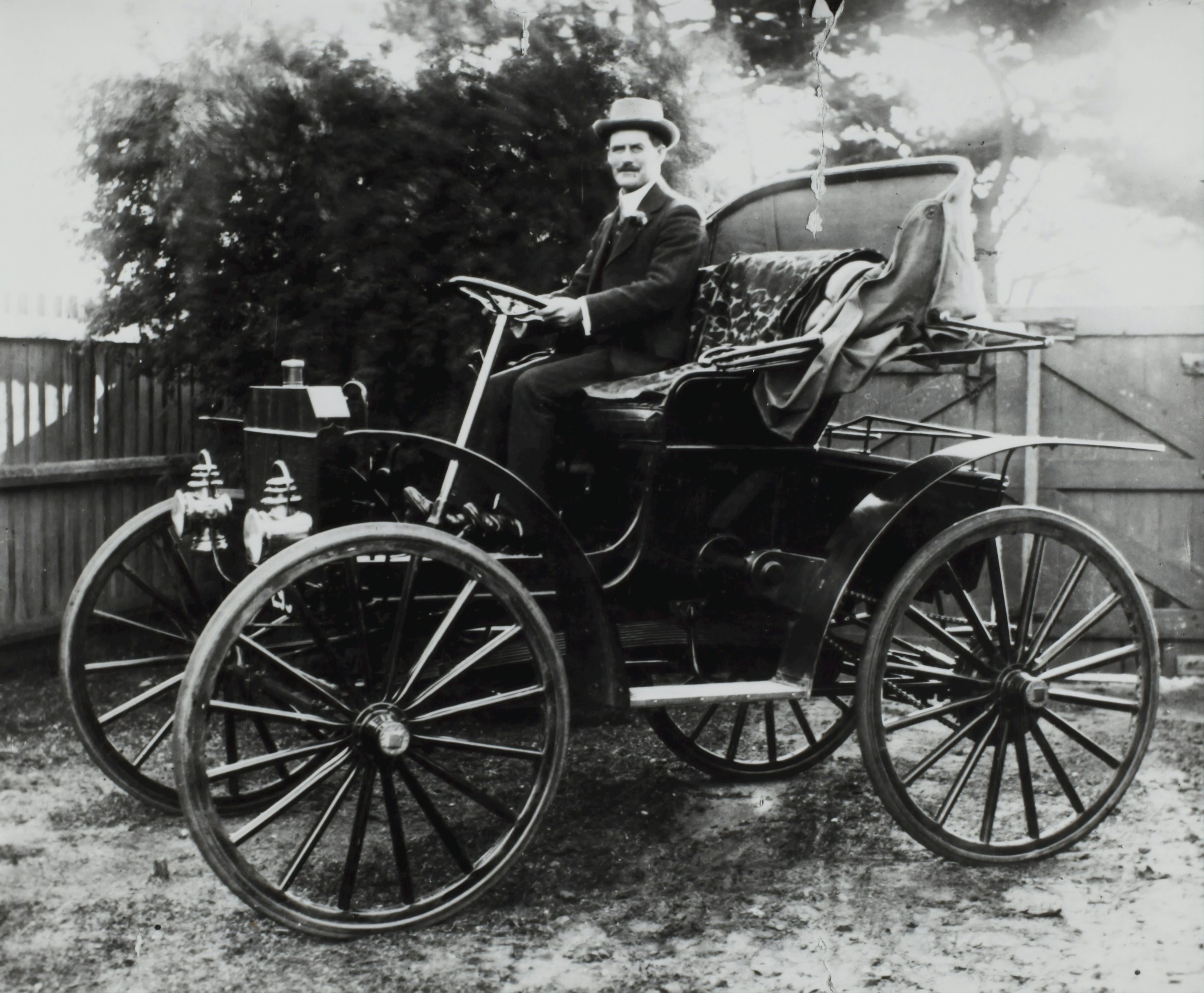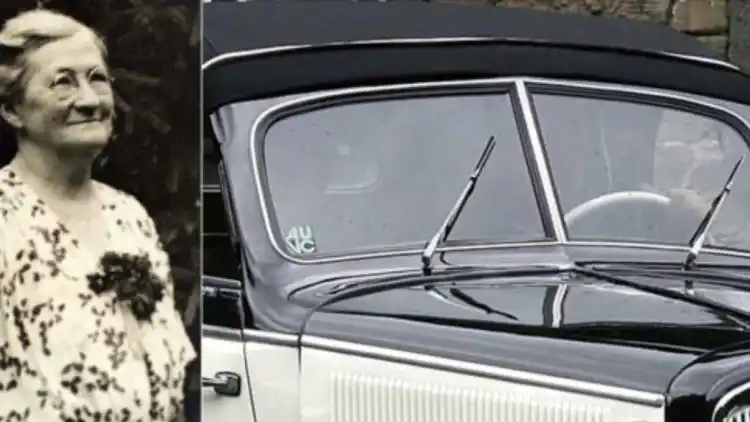- The Answer:Birth of the Automobile
- How We Define "The First Car"
- Key Facts About the First Car (Patent-Motorwagen)
- The Evolution After the First Car
- The Car's Impact on the WorldThe invention of the car, the first vehicle powered by an internal combustion engine, changed almost every part of life. It was one of the most important inventions ever.
- FAQ
Have you ever wondered when the first car was made? This invention changed everything. Let's travel back in time to the very start of the automobile. We will find out who made it and how it changed the world.
The Answer:Birth of the Automobile
The first true gasoline-powered car appeared in 1886. This was the start of the modern automobile. A German engineer named Karl Benz invented it. He called it the "Benz Patent-Motorwagen." This vehicle had three wheels. Most historians agree it was the very first car. It showed the world a new way to travel.
Year:1886
Inventor:Karl Benz
Vehicle Name:Benz Patent-Motorwagen
Key Feature:It ran on gasoline. It used an internal combustion engine. This was a big step forward in car technology.
How We Define "The First Car"
It can be tricky to say what the "first car ever made" really was. The answer depends on what you mean by a "car." Before Karl Benz made his Motorwagen, other early vehicles existed. They helped pave the way.
Here are some examples of early ways people tried to move without horses:
Steam-Powered Vehicles (1700s-1800s):Imagine huge coaches. They moved using steam engines. A French inventor, Nicolas-Joseph Cugnot, built an early one in 1769. These vehicles were often hard to steer. They were not very practical for everyday personal use. They were heavy and slow.
Electric Carriages (Early 1800s):People also experimented with battery-powered vehicles. These were early electric carriages. But batteries back then were weak. They could not go far. So, these early electric cars had a very short range.
The Gasoline Breakthrough:What made Benz's 1886 design so special? It was revolutionary. He used a lightweight gasoline internal combustion engine. This engine was powerful enough. His vehicle was built as one complete car. It was not just a horse carriage without the horse. It was also practical enough for real use. This breakthrough truly started the history of the car as we know it today. It laid the foundation for the modern automobile.
Key Facts About the First Car (Patent-Motorwagen)
Let's look closer at Karl Benz's amazing first car, the Patent-Motorwagen. It was a marvel for its time.
Engine:This first car had a single-cylinder engine. It worked on a four-stroke cycle. It ran on gasoline. This engine produced about 0.75 horsepower. That's not much by today's standards. But it was enough to move the vehicle.
Top Speed:This pioneering vehicle could reach speeds of about 16 kilometers per hour. That is roughly 10 miles per hour. It was certainly faster than walking or a horse-drawn carriage at times.
Transmission:The Patent-Motorwagen used a simple belt drive system. This system transferred power from the engine to the wheels. It was quite basic but effective for a prototype.
First Test Drive:Karl Benz's wife, Bertha Benz, made history. She took a major trip in an improved model in 1888. She rode about 106 kilometers (66 miles). She did this without telling Karl! This trip proved that the car was reliable. It showed that long-distance travel by car was possible. Her drive also helped to improve car design. It changed how people saw this new engine-powered vehicle.
Other Contemporaries:Karl Benz was not the only one working on car technology. Gottlieb Daimler and Wilhelm Maybach were also busy. Around the same time (1886-1889), they developed their own successful engine-powered vehicles. Their work also helped build the foundation for many future car companies. They contributed greatly to the early history of the car.
The Evolution After the First Car
The invention of the first car sparked a burst of new ideas. Car technology grew very fast after that.
Let's see how cars changed in the years that followed:
Four Wheels and More Power:Early cars quickly moved to four wheels. They also got much stronger engines. For example, Daimler's 1889 design showed great progress. These changes made cars even more stable and useful.
Assembly Line Innovation:A huge step forward came from Henry FordUAE FordKSA FordBahrain FordEgypt FordKuwait FordOman FordQatar Ford. Around 1913, he perfected the moving assembly line. This changed everything about car manufacturing. It made cars much faster to build. This meant they became cheaper. Suddenly, average families could afford a car. It was not just for the wealthy anymore. This truly revolutionized how cars were made.
Continuous Improvement:After that, the focus was on making cars better in many ways. Engineers worked on:
Better safety features like brakes and lights.
More fuel efficiency.
Greater comfort for drivers and passengers.
Convenience features like electric starters.
This constant improvement keeps happening even today.
The Car's Impact on the World The invention of the car, the first vehicle powered by an internal combustion engine, changed almost every part of life. It was one of the most important inventions ever.
The invention of the car, the first vehicle powered by an internal combustion engine, changed almost every part of life. It was one of the most important inventions ever.
Here's how the car shaped our world:
Transportation Revolution:People and goods could move incredible distances. They traveled faster than ever before. This changed trade, travel, and how we live.
New Industries:The car created huge new businesses. Think about companies for:
Oil production
Steel manufacturing
Rubber for tires
Building roads and highways
New services like motels and gas stations
The growth of suburbs outside cities
This was a massive boom for global economies.
Personal Freedom:Cars gave people a new kind of freedom. Individuals could decide where to live, work, and travel. This independence was groundbreaking.
Modern Society:Cars shaped how our cities look. They changed our economies. They even changed our daily lifestyles around the world. The car is a key part of modern life.
FAQ
Q:Is Karl Benz the only inventor of the car?
A:Karl Benz did build the first widely recognized car. This was the Patent-Motorwagen in 1886. But he was not alone. Others like Gottlieb Daimler and Wilhelm Maybach were almost ready with their own engine-powered vehicles at the same time. Also, earlier inventors had made steam and electric vehicles. So, many people helped pave the way.
Q:Was there a car before 1886?
A:Yes, there were vehicles before 1886. These included steam coaches and early electric carriages. However, they were often not practical. They were very heavy or very slow. They also lacked the features we expect in a modern car. Benz's 1886 car is seen as the first successful gasoline-powered car. It was truly designed for practical, personal use.
Q:Who was the first person to drive a car?
A:Karl Benz built the car. But his wife, Bertha Benz, became famous for driving it a long way. In 1888, she took an improved Model III Patent-Motorwagen on a trip. She rode about 106 kilometers (66 miles). She did this without telling Karl at first. Her trip proved the car was reliable. She was the first to take such a significant journey in an automobile.
Q:How does the definition of a "car" affect who invented it?
A:The definition is very important. If a "car" means any self-propelled road vehicle, then some older steam vehicles would qualify. But if you mean a practical, gasoline-powered vehicle for personal use, with an internal combustion engine, then Karl Benz's 1886 Patent-Motorwagen stands out. It's the clear starting point for what we call a car today.
Q:Why is knowing when the first car was made important?
A:Knowing the origin of the car helps us understand its huge impact. It is one of the most important inventions in history. It shows how ideas grow and change over time. It also shows how society adapts to new technology. This history helps us understand where cars are today. It helps us dream about where they might go in the future.
Read More:
How Much is the Jetour T2 in China? Your Complete Buying Guide
How to Open Your 2023 Tiguan Trunk from the Inside:An Escape Guide













